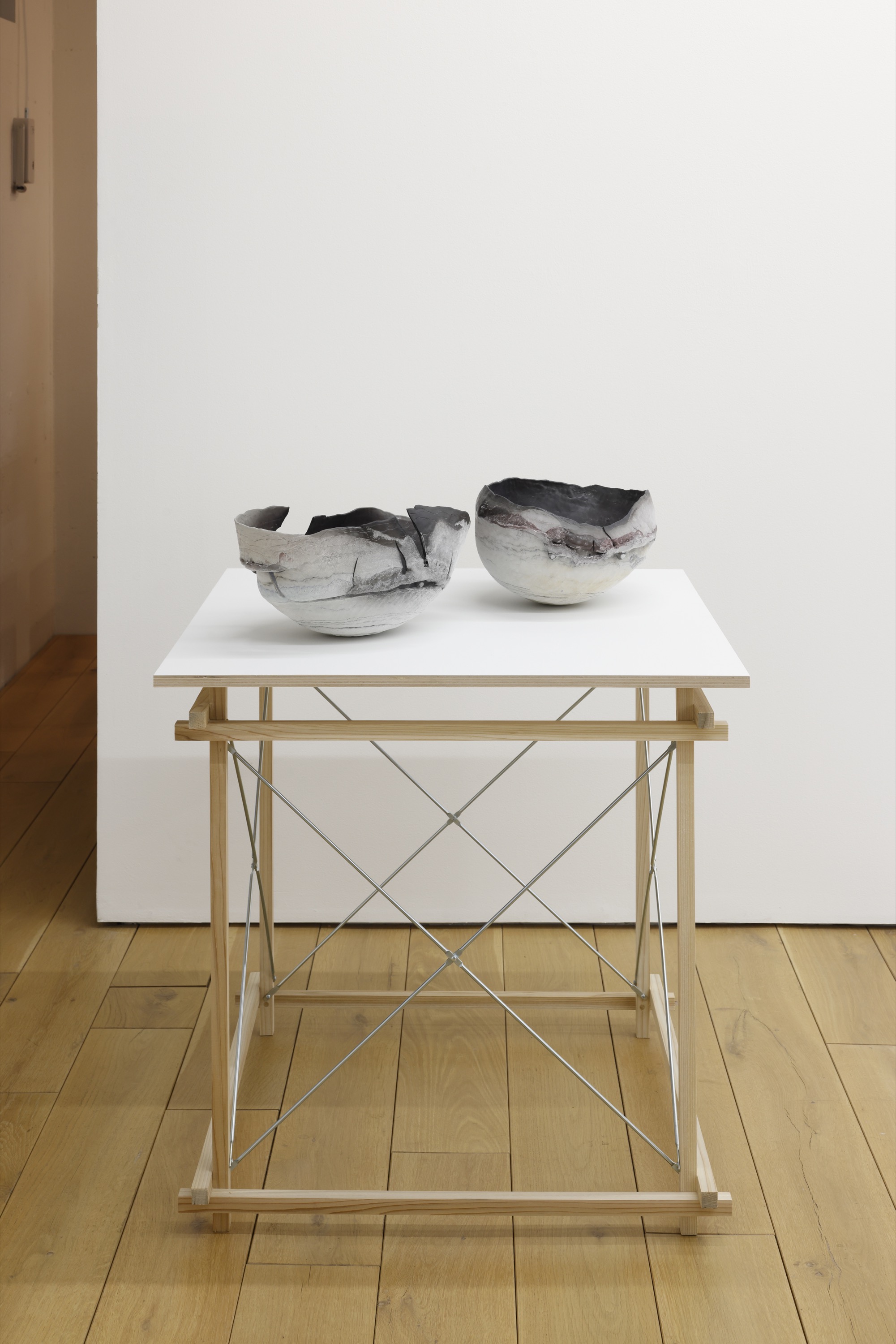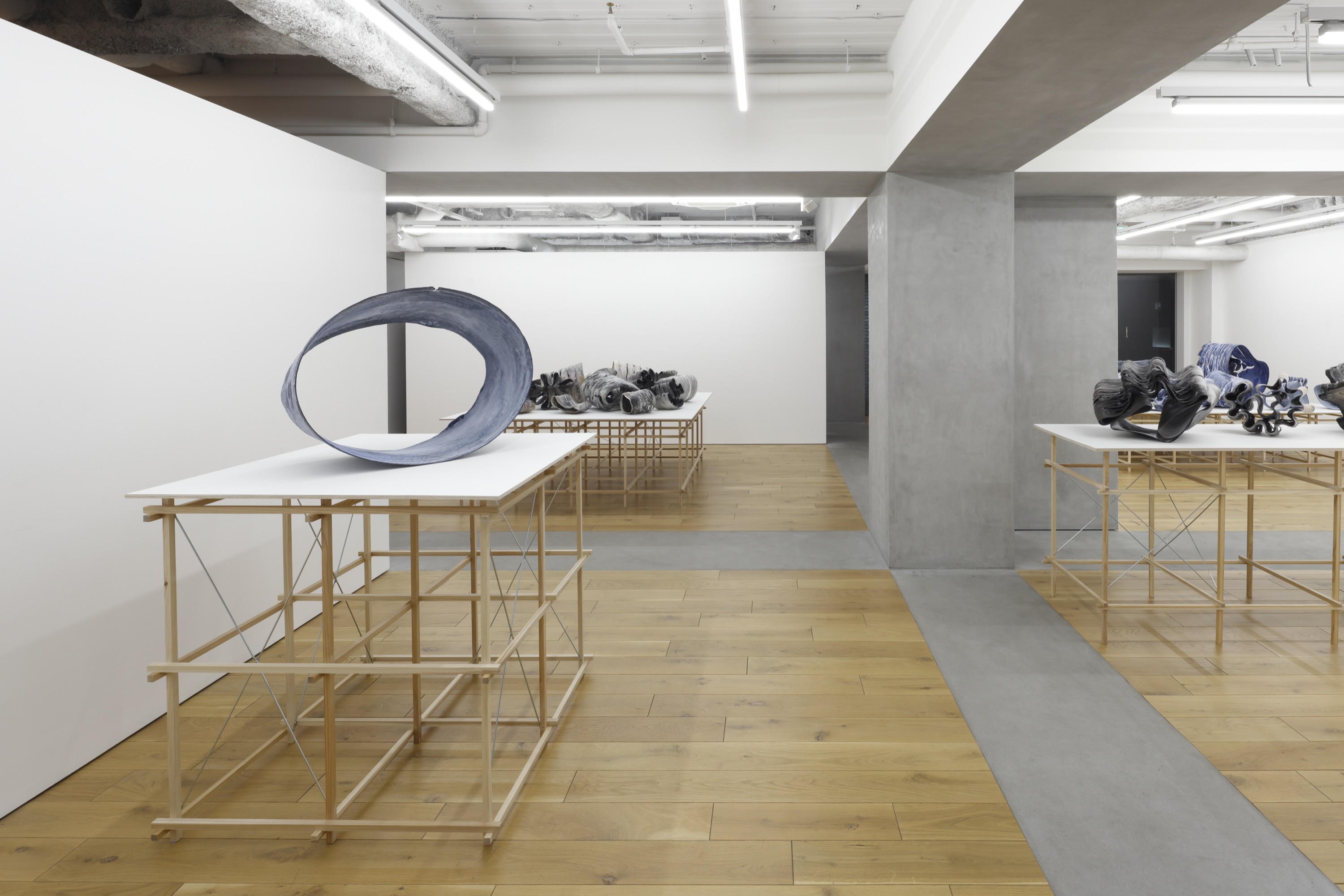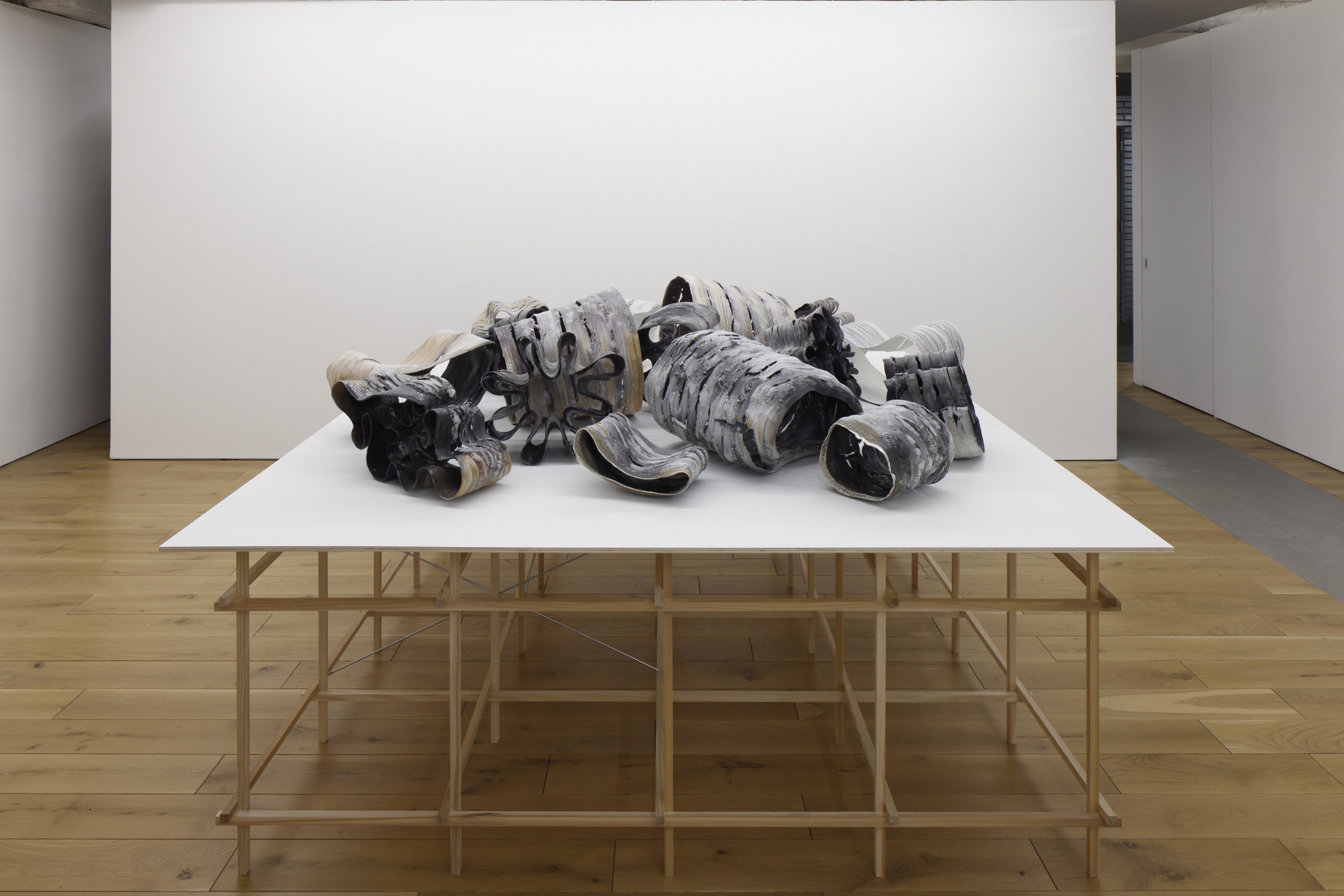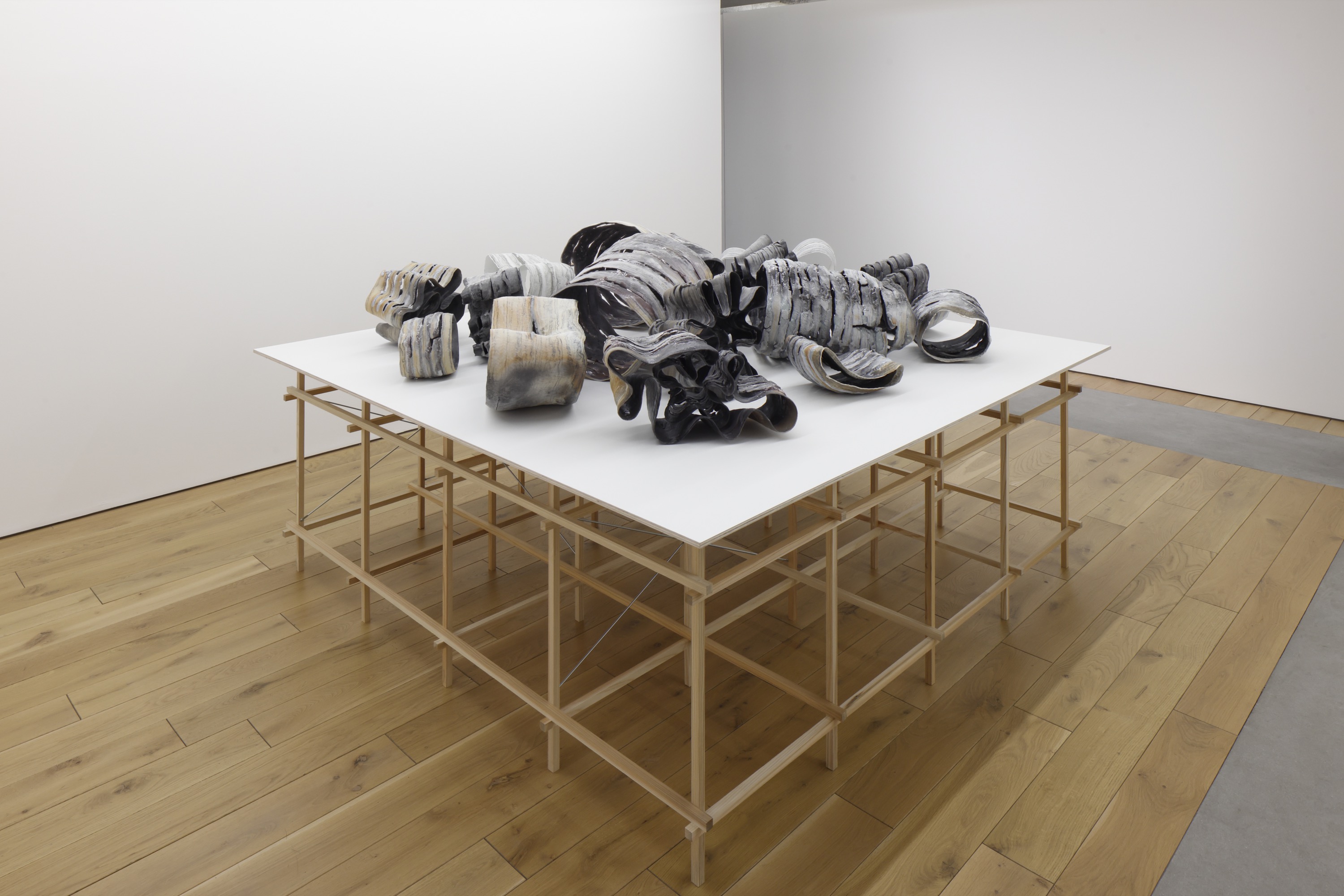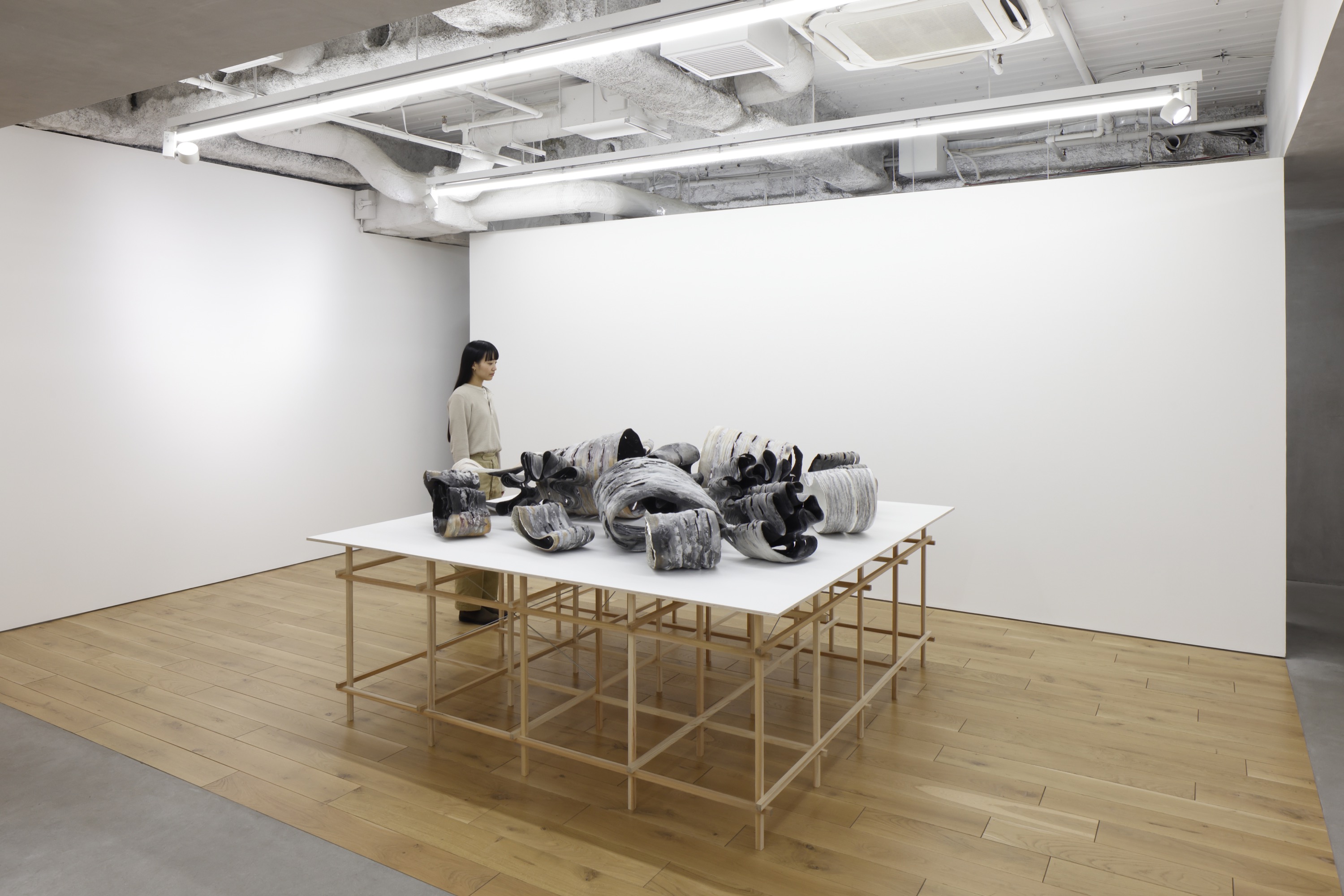TARO NASU is pleased to announce Namika Nakai’s solo exhibition entitled “Float”.
Namika Nakai
Born in 1993, Hokkaido. Lives and works in Kanazawa.
Graduated from Hokkaido University of Education in 2016.
Studied in Australia and Denmark in 2013-2014.
Completed Tajimi City Pottery Design and Technical Center in 2019, Kanazawa Utatsuyama Kogei Kobo in 2022.
Recent group exhibitions include “5th Triennale of Kogei in Kanazawa Craft Visions” and “78th Kanazawa Craft Exhibition” in 2022, “9th Kikuchi Biennale” and “Kasama Ceramic Award 2021” in 2021, “54th Woman’s association of ceramic art” and “76th Kanazawa Craft Exhibition in 2020, “4th Triennale of Kogei in Kanazawa” in 2019, “Craft Competition in Takaoka” in 2018.
Nakai is known for her unique technique of forming thinly stretched clay by hand and rolling it into ribbons. She says that she is interested in the generative process of ceramics as a phenomenon, and her works seem to attempt new creation through destruction, trying to express the passage of time reversibly from traces. Taking advantage of the fact that the melting point of glaze is lower than that of clay, she incorporates the glaze, which melts during the firing process, as one of the layers that form the work. Just as the stratum tells the story of the Earth’s formation process, her works visualize the time of creation of a form, so to speak, as a form of memory. In this exhibition, she attempted to incorporate color into her work through the manipulation of glazes. The blue and vermilion colors are not the result of coloring, but of chemical changes in the glaze. The mineral-like colors have a rough but delicate expression, and together with the organic shapes, create a dignified and beautiful tension in the space.
“When I first started making ceramics, I remember how interesting it was to see the many expressions of pottery. Among them, I thought it was beautiful to see the works distorted and changed by heat when they came out of the kiln, which I thought was typical of ceramics. When I wanted to make use of this to create works of art, I began to think about the relationship between glaze and clay. Glazes are generally used for color variation and textural effects, and for water resistance in certain applications, but I reinterpreted them as ceramic materials with different melting points, and thought that their use in modeling would cause distortion and cracking. This attempt to “reinterpret ceramic materials” is the premise of my work.
For this exhibition, I reinterpreted and created new “metals” based on my previous works. The first piece is “cobalt”. The clay, to which more metal than usual has been added as if the metal had been given plasticity, is piled up thin, with leaving finger marks and fingerprints. The metal not only affects the color, but also the melting point of the clay itself, which in turn is affected by heat. Unlike the black and scarlet colors of carbonizing and firing, the unnaturally wild blue color is given form organically by the hand, the clay, and the heat. Like the coexistence of strength and delicacy, the coexistence of solidity as a material and the uncertainty of pottery is interesting.” (Namika Nakai, 2022)
Venue design : Mandai Architects














